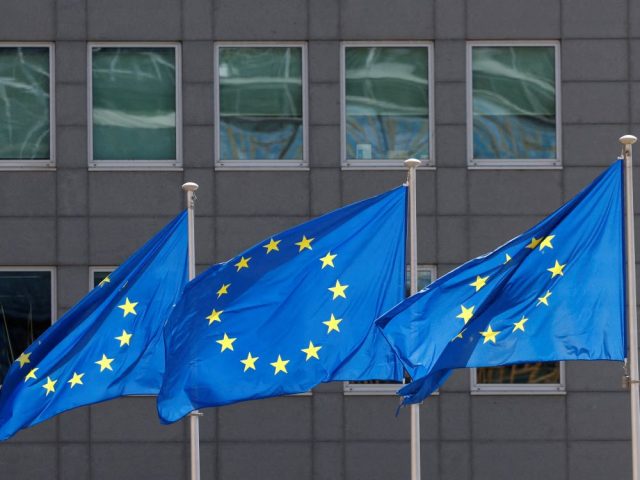In recent years, the European Union has distanced itself from the Latin American region, however, now it has once again set its sights on this part of the world due to the advancement of relations between the countries of this area and the giants China and Russia.
A document revealed last week by El País acknowledges this distancing and the intention of the community bloc to increase the number of multilateral commitments to this region. While at the global level the upheaval due to the conflict in Ukraine, generalized inflation and the energy crisis continues, the European community is considering a commercial and diplomatic offensive.
The document leaked by the Spanish newspaper would have been sent to the foreign ministers of the member countries to warn of the decline of European influence in many of the 33 countries in the region to the benefit of Moscow and Beijing, which have increased their political influence as the amount of their economic interests.The advance of China: the great investor
China is the great investor in the region. It multiplied its investment in the area by 26 between 2000 and 2020, becoming the first or second most important trading partner of Latin American and Caribbean countries, ahead of the EU and the US.
The Asian giant has already managed to displace the US as the leading exporting power, with 14% of the world total, and as the leading world producer. In addition, it is estimated that it will be the largest importer by 2026, explains journalist Nuria López for RT.
The Chinese authorities have promoted a network of relationships with other emerging players worldwide, such as the BRICS forum (together with Brazil, India, Russia and South Africa), the Shanghai Cooperation Organization, the Asian Infrastructure Investment Bank or the New Silk Road.
The Chinese initiative of the New Silk Road is part of a transition process of world hegemony and it is essentially an industrial production project. It includes the construction of infrastructures such as railways, land roads or maritime and air routes; as well as industrial parks and energy projects that favor the development of the countries involved.
Since its proposal in 2013, more than 100 countries have joined this initiative, including 21 of the 33 States of Latin America and the Caribbean, which is a resounding success. In addition, Bolivia, Brazil, Chile, Peru and Venezuela are members of the Asian Infrastructure Investment Bank.
China’s success is based on the fact that its strategy responds to the principle of non-interference in the internal affairs of other States, respect for sovereignty and territorial integrity, and the promotion of mutual benefits. A line of action that differentiates it from the actions of the US and its main allies, such as the European zone.
The importance of Latin America for this strategy can be understood by taking a look at the numbers for the region as a whole: it accounts for 8% of the global population (640 million inhabitants); its GDP as a whole is equal to that of the world’s third largest economy; it owns 22% of the world’s oil reserves; it is the third region with the largest arable land; and contains one of the main global reserves of lithium, among other resources and data.
It is estimated that trade between China and this region multiplied by 22 between 2000 and 2013 alone, reaching 450,000 million dollars in 2021.
In addition, in 2014 the Cooperation Forum between China and the Community of Latin American and Caribbean States (China-CELAC) was created, through which it committed an investment of 250,000 million dollars between 2015 and 2019, in six fundamental axes: agriculture, energy cooperation, construction of infrastructure, technological innovation, manufacturing, natural resources and information technology.
Likewise, China has already established eight strategic associations with countries in the region: Peru, in 2013; Venezuela, in 2014; Argentina, in 2015; with Chile, Ecuador, Mexico and Uruguay, in 2016; and with Brazil in 2017.
In total, since 2005 China has allocated at least 119,000 million dollars in loans to countries and companies in the Latin American region, with Venezuela, with 56,300 million dollars that it pays mostly in oil, in the lead, followed by Brazil, with 22,000 million .Russia: political influence
For its part, Moscow has long been trying to strengthen its influence in Latin America. Vladimir Putin’s government has moved closer to countries such as Brazil and Argentina, and has strengthened ties with traditional allies, such as Venezuela and Cuba.
One of the pillars of the commercial relationship between Russia and Latin America was founded after the annexation of Crimea in 2014. After the sanctions imposed by the EU at that time, Moscow turned its attention to other regions to import products, such as food, that previously came from countries from the EU bloc.
Because of the political scenario most of the fruit, vegetables and meat come from countries like Argentina, Brazil or Uruguay. On the other hand, Russia’s exports to this region are mainly made up of oil, fertilizers, coal or wheat.
In 2020, Latin America exported products to Russia worth just over 5,000 million dollars (a figure slightly lower than that of imports), far from the 66,000 million dollars sent to the US or the 119,000 million to China.
In the region, Russia has allies such as Venezuela, where it invested 6,000 million dollars in 2018 alone. However, this is not the Kremlin’s main trading partner in Latin America, the top three positions are held by Argentina, Brazil and Mexico.
Furthermore, Russia is a major supplier of weapons to the region. Peru, Mexico, Argentina, Colombia, Venezuela and Uruguay are the countries that have made the largest purchases in this category.
On a political level, Russia’s attempts to position itself in Latin America are more important and the coronavirus pandemic was a sign of these intentions.
While other great powers hoarded doses of the newly developed vaccines, Moscow made its immunizer, Sputnik V, the first to be available in several Latin American countries. At the same time, Russia has spent years strengthening its ties with the governments of the region, from the broadest political spectrum.The European position
In this scenario, Brussels would be trying to increase its influence in the region by increasing its relations. The most important moment is expected to be the summit to be held in the second half of 2023 in Spain.
On that date, when Spain holds the presidency of the Council of the European Community, the leaders of the European Union, Latin America and the Caribbean will meet in a regional summit that has not been held since 2015.
Precisely this week the Spanish president, Pedro Sánchez, has started a trip in which he will visit Colombia, Ecuador and Honduras, and in which it is expected that the preparation of next year’s summit will be very present.
In a multipolar world, the European Union intends to reaffirm itself on the international stage and once again be perceived as an important actor, for which it considers important the measures that Brussels can propose in support of Latin American countries in their efforts to overcome their economic crisis which has grown even more because of the conflict in Ukraine.
However, the change in the political cycle on the continent does not leave them an easy path. The recent election of progressive leaders, coupled with the reticence towards the US and the strengthening of other alliances, may be difficult obstacles to overcome for a European community fully aligned with the Atlantic Alliance.
Likewise, the community bloc also has to overcome the preconceived idea of a common link, driven by the historical ties maintained above all with Spain, which have increasingly lost more and more importance.
Thus, the EU is preparing a kind of ‘reconquest’ of Latin America through a project of the European External Action Service, which aims to promote an investment plan of 8,000 million euros to allocate them to the region.
However, diplomatically, both China and Russia are ahead in this regard and have an undeniable advantage: no country in the area can blame them for a colonialist past.
In fact, the European past has been valued by the new left-wing leaders, who have recently come to power and who have once again fueled anti-European sentiment in the population. Something similar to what happens with the US due to its imperialist practices.
The distance with the positions towards the Ukrainian conflict illustrates this situation, as was seen in July, when Mercosur refused to allow the president of Ukraine, Vladimir Zelensky, to intervene by ‘streaming’ to ask for their support in the conflict, in full tour online with the parliaments and the European institutions.


